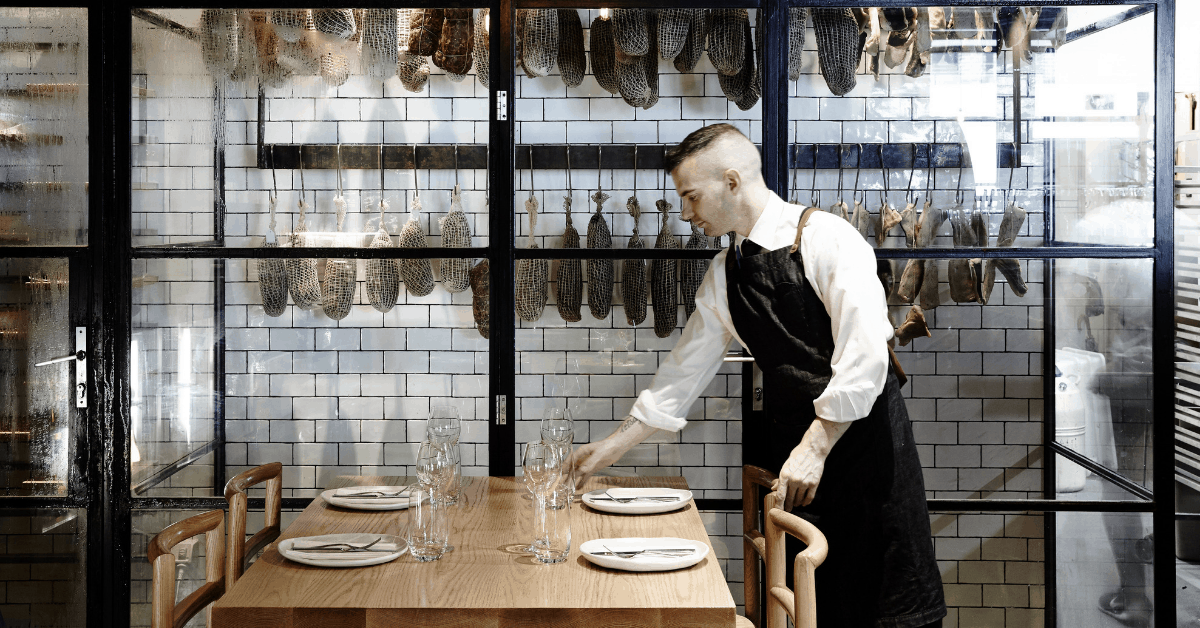How plates of penne, used to steer people away from a McDonald’s restaurant, kicked off the slow food movement.

The history of the slow food movement
According to Shane Holland, executive chairman of Slow Food in the UK, the slow food movement began in Italy more than 30 years ago in what he described as a “reaction to the loss of our culinary heritage and globalization of our food system”.
The idea behind the slow food movement was brought to life by Carlo Petrini, who took offense to a McDonald’s restaurant opening in Rome in 1986. Petrini saw this as a threat to native food traditions and handed out plates of penne to steer people away from fast food consumption and remain true to their local cuisines.
According to grassroots company Slow Food, the movement was officially founded in Paris in 1989 and gained speed throughout the 1990s, with movements popping up all around Europe and international fairs were held to attract more followers, Holland said.
“We have now become the world’s biggest food movement, with over a million activists and many tens of millions practicing slow food principles,” Holland said.
“With activities in over 150 countries, our work is as varied as the places we operate in.”
Slow food principles aspire to make people around the world access and enjoy food that is good for them, good for those that grow it, and good for the planet.
Slow food’s activities have included biodiversity projects to save endangered foods, food education, celebrating the gastronomic traditions of Europe and Asia through international events, and building an international network to help connect like-minded people.

Pros and cons
For those behind the slow food movement, the fightback against the fast food giants is done with an arsenal of improving societal health, resolving the environment’s problems, and supporting local farmers and small businesses.
According to Holland, the slow food movement “empowers” people and communities globally, challenging people’s lifestyles and their approach to food.
“Eating is an agricultural act and fork-to-fork we decide how we want the world to be,” he said.
“Food that is good, clean, and fair for all is the slow food movement’s motto.”
While the benefits of eating local and supporting local farmers are clear, some critics argue the slow food movement has led to class issues due to the costs related to only using fresh ingredients and cooking with local foods.
Pioneers
Naturally, Carlo Petrini, the movement’s president, is the main champion; he was named by Time Magazine as the person most likely to save our food system. There have been many high-profile chefs, such as Alice Waters and Raymond Blanc, who have also become activists through their cooking and work. Indeed their restaurants, Chez Panisse and Le Manoir Quatre Saisons respectively, are both now considered “slow” as they champion local, sustainable agriculture with a belief in “edible education”.

This has inspired new restaurants and smaller, more local affairs around the world to embrace the slow food culture: Nomad in Australia works with local suppliers, producers, growers, and contractors in an effort to minimize their carbon footprint and Relæ in Denmark won the Sustainable Restaurant Award two years in a row, having been certified organic at the highest level of 90-100 percent with a gold mark.
A Slow Food Chefs’ Alliance, with 1106 members, launched in 2009 in an effort to engage chefs in actively championing small-scale producers, and promoting good-quality local and sustainably produced food.

Evolution
So what’s been the secret to the slow food movement’s longevity? Evolving with the times. Urban farming (the practice of cultivating, processing, and distributing food in or around urban areas), organisations such as Food Not Bombs (a loose-knit group of independent collectives, sharing free vegan and vegetarian food with others), and school gardens all help more people access sustainable, healthy foods and provide them with more time to sit down and enjoy their meals instead of feeling reliant on fast food.
“We continue [evolving] by tackling issues in each country at a grassroots level,” says Shane. “We have been active in areas from junk food advertising bans to cooking in schools.”
People are becoming more educated about their food than ever before and are becoming more conscious about what they’re consuming. This has helped the slow food movement gain momentum in recent times, allowing more people around the world to notice their cause.



